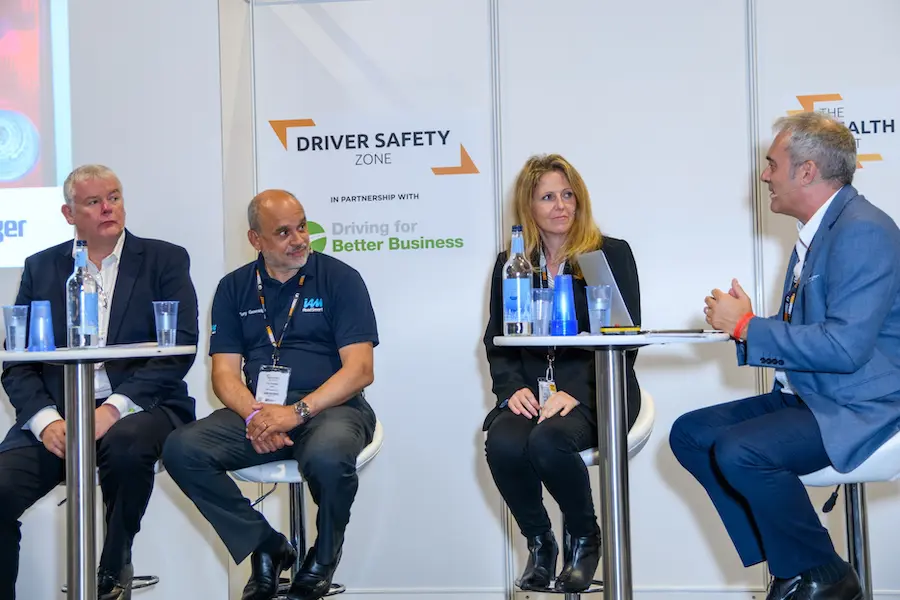Five Common Mistakes Made by Driver Risk Managers … and How to Avoid Them

17th November 2021
FIVE COMMON MISTAKES MADE BY DRIVER RISK MANAGERS
… AND HOW TO AVOID THEM
Managing road risk as an employer can be a minefield – with the added complication that, as a director, you may be liable to prosecution if anything goes wrong. And with 40,000 injury collisions a year involving those driving for work and 65,000 a year if commuters are included, there is a high chance something could go wrong.
More than a dozen videos are now freely available from the National Highways Driving for Better Business (DfBB) campaign, to help navigate the legal responsibilities facing employers.
Recorded over a three-day Health and Safety Conference, the videos pull together all the key strands of managing road risk, with a range of experts providing practical advice. The series includes a keynote presentation from Kanwal Kanda who heads up the transport sector at the Health and Safety Executive (HSE), introducing revised guidance for any organisation that employs staff who drive or ride for work followed by a panel discussion involving HSE, the Department for Transport and DfBB.
DfBB Campaign Manager Simon Turner outlines the nature of driving for work and says there are five common mistakes made by fleet managers:
- Failing to comply with Duty of Care legislation – mainly through lack of awareness – and gaps in understanding responsibilities among certain levels of employees.
- No proper vehicle defect system in place. “One in three cars and half of all vans fail their MoT at the first attempt,” he says. “If the vehicle hasn’t been checked on the day of the MoT, you can bet it wasn’t checked on the other 364 days.” He points out, for instance, that the DVSA is carrying out more compliance checks on vans, with the typical fine being around £970.
- Failing to identify high-risk drivers, citing one driver who successfully persuaded a judge not to withdraw his licence as he would not be able to get work as a mobile tyre-fitter. The driver had 54 points. Fleet managers can avoid this via pre-employment checks, collecting collision records and making use of telematics data on driving style.
- Relying on different data sets that are not integrated. “If and when an incident occurs, that’s not the time to realise gaps in data.”
- And finally, a lack of appropriate management information. “Set baselines from which to improve,” he says. “If you’re not measuring it and not monitoring it, you’re not managing it.”
Additional videos feature:
- revised guidance from HSE which has not been updated since 2014 and now includes sections on telematics, powered two-wheelers, and what employees they can expect from their employer
- guidance on preventing incidents in commercial fleets and the importance of managing van fleets to the same standards of HGVs
- a greater understanding of some of the key causes of crashes including driver fatigue and impairment from drink or drugs.
- the liability of employers in managing driver hours – including a case study of a prosecution of a welding company following the death of a young trainee who had worked for 26 hours. The judge’s verdict said it showed “clear and unambiguous failure” of the firm to ensure the safety of its employees.
Driving for Better Business has a range of free online tools to help organisations understand their responsibilities, learn where to focus priorities, identify gaps in their management processes, benchmark them against others, create improvement plans – and share successes with other organisations.
“With around 20 million vehicles being used for business journeys, including trucks, vans, company cars and grey fleet, that means every at-work driver has a 1 in 500 chance of being in a fatal or serious injury collision,” says Simon Turner. “Our mission is to improve compliance for all those who drive or ride for work by demonstrating the significant business benefits of managing work-related road risk more effectively.”
To support the videos, DfBB has produced the Employers’ Guide to Managing Road Risk
(available for editors to download here)
RoadRisk_v4.pdf (5 MB)
The driver safety videos can be found at
https://www.drivingforbetterbusiness.com/driver-safety-zone-2021
Media contact: Hadstrong https://hadstrong.com/ Becky Hadley on 07733 054839
About Driving for Better Business
Driving for work is one of the highest-risk activities that many employees undertake, whether they drive a commercial vehicle, a company car or make occasional work journeys in their own vehicle. As the gig economy continues to grow, this also means those who ride for work as well as those who drive.
Driving for Better Business is a free to access government-backed National Highways programme, delivered in partnership with RoadSafe, to help employers in the private and public sectors reduce work-related road risk, protecting staff who drive or ride for work, and others who they may share the road with.
Our mission is to improve the levels of compliance for all those who drive or ride for work by sharing good practice and demonstrating the significant business benefits of managing work-related road risk more effectively.
